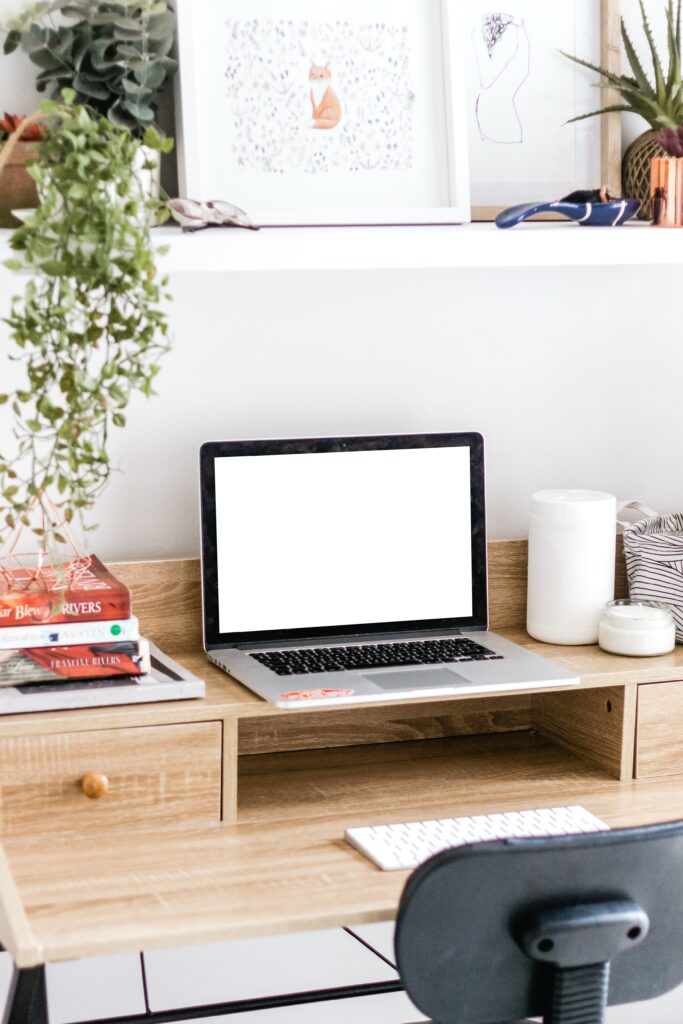Setting up your Workspace
Use these tips to ensure your workspace provides optimal wellbeing support and encourages ultimate creativity
We know that sitting for long periods at a time can have negative consequences for our health and wellbeing, and regular breaks alongside standing for part of your day can help to prevent aches and pains when they occur. If a standup desk isn’t for you, there’s plenty of adjustments you can make to help enhance your wellbeing whilst you work.
Often sitting cannot be avoided at times, which is why it’s important to ensure that your office chair and workstation are set-up to provide optimal support for your back, eyes and legs!
There are some great tips below to assist you in ensuring your workspace is set-up correctly, whether it be at school, home or both. Not only will your workspace look great, but you’ll feel better when you’re in it.
Setting up your office chair:
Adjust the chair height
Sit up straight on your chair, roll your shoulders up and back and allow your arms to hang loosely by your sides. Make a right angle at your elbow and keep your wrist straight. The underside of your hand should now sit naturally on top of your keyboard. If it is not, then adjust your chair up or down to enable your hand to rest on the keyboard. Do not adjust your arms or hands!

Other chair adjustments
Adjust the back in or out, up or down, or if the seat has a sliding seat mechanism slide it in or out so that you can feel the lumbar support in the lower curve of your back. It should be both firm and comfortable, whilst providing support for the natural curve of your back. Ensure the angle of the base of the seat is either neutral or tilting slightly forward, to ensure the front of the chair is not pushing into your thighs.
Remember, no chair, no matter how well it is set-up can prevent you from slouching unless you proactively sit with correct posture. The key is to be mindful of your posture at all times, making sure that your spine remains lifted, with your shoulders rounded back.
Did you know... having live plants in your working environment helps with productivity?
Workspace basics for optimal wellbeing support
Adjust the chair height so that your elbows are at desktop level. Be sure to roll your shoulders back and relax them first.
Sit fully back into your chair and adjust the seat back for good lower back support. Use a lumbar roll if the back of the chair does not support your lower back.
If your chair seat has a tilt feature, set it so that you are comfortably and adequately supported.
If your feet don’t comfortably reach the floor, or there is pressure on the backs of your legs, use a footrest.
Locate your monitor so the top third of the viewing area is at or below eye level. Use a monitor stand if required. If you can clearly view the screen contents, there is no specific distance that you need to be from the monitor.
With elbows at desk level, ensure your wrists are straight. Use a wrist rest if required, and if you have armrests try to adjust them so they support your arms without beings too high or low.
Position the mouse as close as is practical to the keyboard, so that both elbows are directly under the shoulders while working.
To reduce stress on the neck when working from paper documents, a document holder can be placed between the keyboard and monitor.
If you need to use the computer whilst talking on the phone, put the phone on loudspeaker (depending on your office environment) or use a phone headset. This will help avoid strain on your neck and shoulders.
Use your mouse pad or another soft surface to pad the edge of your desk. Avoid pressing your hands or forearms against any desk edge.
Adjust screen brightness and contrast for clear, comfortable viewing. Clean your screen regularly. Remember the 20-20-20 rule: look away from the monitor every 20 minutes to a distance of 20 metres for 20 seconds. This helps avoid eye strain.
Finally, and very importantly, remember to take breaks regularly, preferably every 45 minutes to an hour for 1 or 2 minutes. Go get a glass of water, take a step outside, anything that takes you away from the desk for a short period of time.
If these steps are put into place, you will aid in reducing neck, back, leg and eye strain throughout your workday. This ensures you are not only feeling better, but also operating at your very best.
Please contact our Site and Facilities Leader should you feel that you need to purchase any additional support for your workstation.

Regular Breaks
Take a break every 45 to 60 minutes for 1 to 2 minutes!
20-20-20 Rule
Look away from the monitor every 20 minutes, to a distance of 20 metres, for 20 seconds!
Stop Slouching
Be mindful of your posture at all times!
Adjust your Chair
Maintain good sitting practice with the correct chair settings!